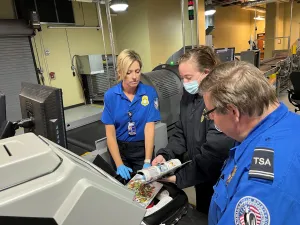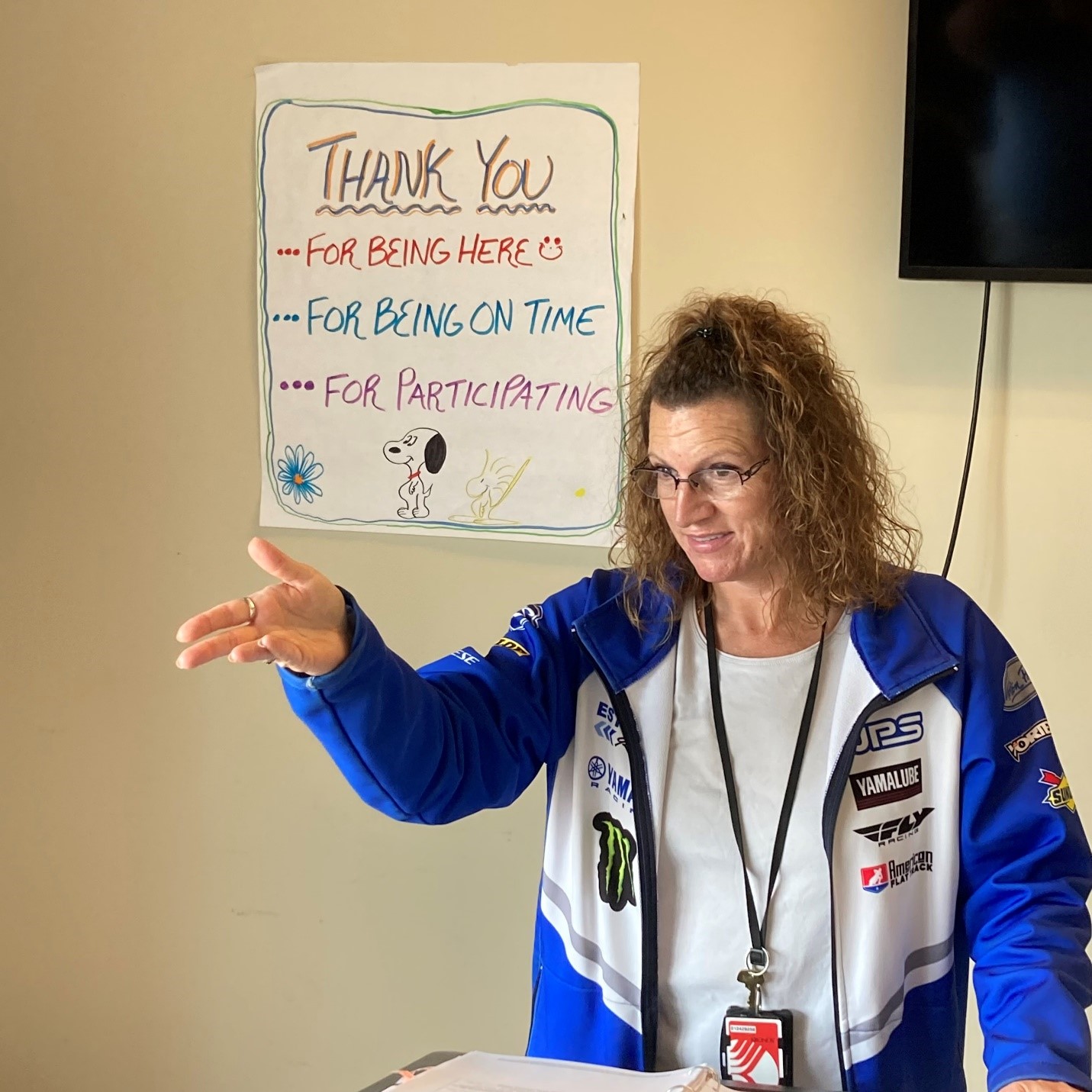
Security training instructor (STI) duties are like icebergs – only a small percentage of what they do is visible. This can be hard to believe because it’s a very visible position, especially to a new hire.
STIs are available to a newbie from day one. When trainees complete coursework at the Federal Law Enforcement Training Center in Glynco, Georgia, they return to their home airport for additional classwork with their local training instructors. When they certify and earn a badge or promotion, you can be sure at least one of the agency’s 748 STIs had a part in that officer’s success.
STIs are the subject matter experts of ever-changing standard operating procedures, responsible for training uniformed officers on the correct way to perform screening duties. They also practice what they teach. Balancing administrative duties with maintaining their screening certification, STIs stay in the checkpoint and checked baggage rotation for 20% of their workweek.
“We have to perform our procedures correctly every time,” said Marcy Estenson, Expert Transportation Security Instructor (ESTI) at North Dakota’s Hector International Airport. “We have to set a high standard for performance of our duties because we don’t want officers to pick up bad habits from anything we do.”
Recently Estenson and Master STI Nancy Farkas of Michigan’s Cherry Capital Airport discussed the challenges they face as TSA instructors and why they get personal satisfaction from supporting their peers as STIs.
“I coach and support officers so they can help support the mission,” said Farkas. “We have such a rigorous certification practice here at TSA, and I enjoy helping people learn the coursework, pass the tests and get their badge.”

“I started doing on the-job-training monitoring – that’s what they called it back in the day – six months after I started,” recalled Estenson, a 15-year TSA veteran. “I was hooked on the training aspect after that. Honestly, I can’t think of one thing I don’t like about my job.”
Balancing variety takes organization
The other 80% of an STI’s workweek is as varied as the people coming thorough the checkpoint, and Estenson and Farkas wouldn’t have it any other way.
“Something I love about my job is the variety,” said Farkas.
Out of Michigan’s 17 federalized airports, she’s worked with colleagues at 14 of them. She enjoys mixing up her daily routine with one-day and sometimes multiday extended visits to airports within her state, conducting a range of activities from covert testing to instruction on new equipment.
In response to STI work that’s not visible, Estenson keeps an email she received from an STI colleague tacked on her cubical wall as a reminder for anyone thinking the job is one dimensional.
It starts with, “It’s easy to say that we just teach XYZ courses,” said Estenson.
What follows is a list of administrative duties STIs accomplish in support of the mission, ranging from simulator troubleshooting and updates to tracking the team’s ongoing professional development courses, and from learning and preparing course materials before class to record keeping and data entry.
A graduate and advocate for the Rising Leaders Development Program, a 12-month TSA career development initiative, Farkas wasn’t initially comfortable with public speaking, but she was drawn to teaching.
“I knew I could do it,” said Farkas who made a deliberate effort to seek out speaking opportunities. “I encourage officers to push themselves out of their comfort zone and network by volunteering for events.”
Estenson’s extensive networking has opened up fun opportunities at headquarters in Springfield, Virginia outside Washington, D.C. While doing proofreading work for instructor guides, she was invited to TSA HQ for some creative work.
“I was one of the STIs chosen to create training scenarios,” said Estenson. “It was neat to come back to my airport and instruct those courses knowing I had a hand in creating them.”
Estenson also agrees confidence is an important trait to have, especially in career progression, and suggests employees find a mentor.
“Don’t give up on yourself,” said Estenson, always the positive coach. “Believe you can do it because you can.”
By Karen Robicheaux, TSA Strategic Communications & Public Affairs
Editor’s Note: Estenson and Farkas participated in one of a series of Day in the Life panel discussions facilitated by Women Excel@TSA, an employee advocacy council born of the desire to present a unified body of individuals interested in the retention and cultivation of female talent within TSA.
By Karen Robicheaux, TSA Strategic Communications & Public Affairs
